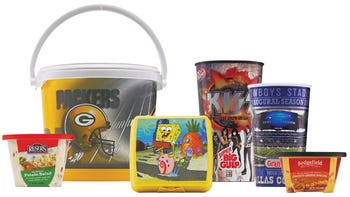One of the challenges to the growth of the in-mold label (IML) industry in North America has been the lack of qualified local label suppliers. Most of the labels have come from Europe, which makes for an inefficient supply chain. One U.S.-based company, however, stepped up to the plate several years ago and began producing labels for IML. The result has been consistent growth over the past several years, which the company attributes to IML opportunities.
January 26, 2012
One of the challenges to the growth of the in-mold label (IML) industry in North America has been the lack of qualified local label suppliers. Most of the labels have come from Europe, which makes for an inefficient supply chain. One U.S.-based company, however, stepped up to the plate several years ago and began producing labels for IML. The result has been consistent growth over the past several years, which the company attributes to IML opportunities.
Inland Label (LaCrosse, WI) was originally founded in 1903 as a commercial printing company. In the 1980s and 90s, Inland became known for its creative and expertly produced Cut & Stack labels for beer producers in North America. Today, the company is a specialty printer of labels, producing Cut & Stack, injection in-mold, pressure sensitive, blowmold IML, and roll-fed labels for the beverage, food and consumer products markets.
Jackie Kuehlmann, marketing manager for Inland Label, told PlasticsToday in an interview, that building the IML business hasn’t been easy. “We are in the same boat as everyone else. We recognize that there’s a lot of opportunity in North America, but traditionally most labels have come from Europe. Now we’re beginning to market ourselves differently.” Inland Label will be exhibiting its technologies at the upcoming the NPE2012 show in Orlando, FL, booth #8939 in the West Building.
Kuehlmann said that driving growth for a relatively new technology requires some different tactics. “We’re looking at it from all sides,” she said. “We’re working to build relationships throughout the supply chain: molders, automation companies, and brand owners.”
Not only is the supply chain for IML technology complex, “each IML project is a completely different animal,” Kuehlmann added. “In one case you might deal with the molder, in some cases the brand owner, in some cases with both. We recognize that to build acceptance for our labels and the IML technology, we need to have relationships with everyone.”
With IML technology, each project is different because a customer may need different variations of the label depending on the environment the label will encounter from molding through to the store shelf. “That means every project is a custom project,” Kuehlmann said. “We have to produce a label that performs the way the customer needs it to.”
A domestic IML first at NPE2009
Kuehlmann explained that Inland Label was the first domestic supplier to offer gravure printed inline roll-fed IML, a technology that was first demonstrated at NPE 2009 in CBW Automation’s booth. Kuehlmann noted that roll-fed inline IML “offers a significant cost savings for the right application. Not every application is suitable for inline IML roll-fed technology. We go through quite a bit of analysis with customers to determine its suitability for the project. It fits best with high-volume, low SKU products.”
One of the advantages that Inland Label’s roll-fed IML labels offer is the ability to use thinner gauge film, which can provide significant cost savings, reduce raw material use, and improve throughput on the molder’s production line. Roll-fed IML labels can also be used with much smaller and larger products that historically were not possible with IML.
Building better labels through chemistry
To achieve the various label requirements, Inland Label has an onsite chemist, Tricia Sime, Director of Research & Development, who Kuehlmann noted is “an important piece of the picture in developing relationships with materials, ink and coatings suppliers.
Inland Label differentiates itself by supplying labels that Kuehlmann said perform better for their specific applications. “We’re formulating our labels, coatings, inks specifically for each customer’s needs,” she explained. “That’s the approach we take as a company. That’s how we approached the IML industry from the beginning.”
Inland Label has always strived to provide its customers with something different and better – not the same product that everyone else offers. “Offering different and better labels has always been our goal,” said Kuehlmann. “We didn’t just say we wanted to produce IML labels, then start selling an off-the-shelf product. That wouldn’t work because a one-size-fits-all strategy doesn’t work for IML,” she added. “Our in-mold labels are a highly manufactured product for us.”
Inland Label is a family owned company, and one that is financially strong. The company has invested more than $20 million over the past six years, including a facility expansion and several state-of-the-art presses and finishing equipment, which the company says match or exceed the technology currently used in Europe to produce IML labels, “to set ourselves up for growth and to grow our IML business,” Kuehlmann stated. “We plan to bring new technologies and innovation to the IML market just as we have and continue to do in our other markets.”
You May Also Like


